
Boulton Paul Defiant Mk I

The Boulton Paul Defiant was a competently designed aircraft that more than met the requirement to which it was produced, but it was a failure none the less. It failed partly due to the fact that no designer could design a fighter handicapped by the weight and drag of a bulky powered turret and at the same time match the speed and agility of contemporary fighters employing the same sized power plant. It's most serious problem with its concept was the division of responsibility between the pilot and the gunner as the aircraft had no forward firing armament which required the pilot to think in abstract terms of getting the gunner in the right position to make a shot. It was all too easy for an enemy to get into the blind spot behind and below the fighter and deliver a killing blow.
The Defiant prototype first flew in August of 1937. Except for a few minor changes the Defiant was pronounced an excellent flying machine with few vices. The first production aircraft flew in July of 1939. The Defiant had a brief period of glory during the Dunkirk evacuation when they were credited with fifty-seven kills in a two day period, claiming that the Germans had mistaken them for Hurricanes. While all of this was accepted at the time and it garnered some good publicity for the Defiant it was subsequently found post war that the claims were highly exaggerated. In further actions the Defiant did not fair nearly as well and with losses mounting and the fact that the RAF could not afford to waste aircraft, it was shifted to the night interception role.
The Defiant made its mark in history as the first fighter to have a fully enclosed power driven turret and though it proved a failure in daytime operations it found success filling a gap in Britain's night time defense until more advanced night interceptors became available.
The Kit
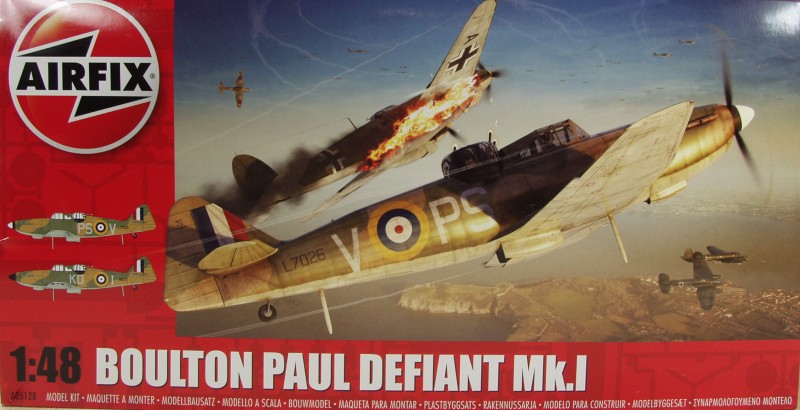
The Airfix kit is one of their new generation kits released since Airfix was taken over by Hornby. The kit arrives in a top opening tray type box made of thin cardboard. The bottom has had the sided and ends folded over to make it more sturdy. Inside the box in one large bag are all the parts with the clear parts enclosed in a smaller bag. There are four sprues molded in a pale blue color. The parts have a smooth matte finish and are cleanly molded with no flash found. The surface detail consists of recessed panel lines and rivets in a couple places and raised fastener and other detail as appropriate. I found no surface defects on my kit and ejector pin marks appear to be limited to areas that won't be seen. Some of the sprue attachment points do seem a bit heavy to me. Mold alignment seams are minimal.
From a detail standpoint the control surfaces are molded separately and the fabric detail on them is very well done. The main gear bays have some structural and piping detail. The wings have an internal box structure that is built up that will act as a stiffener/spar for the wings. The cockpit has enough detail to satisfy most and I'm sure the after market folks will take care of any missing items. The instrument panel has raised dials and the larger ones have internal detail. A decal is provided as and overlay for the panel. The main wheels are weighted and feature separate hubs to make painting easier. Separate gear doors are supplied for gear up and down configurations. The turret also has a most complete interior made up of 14 parts, not including the clear parts. Two different styles of exhaust stacks are supplied but one set is for the night fighter version which I assume will be offered at a later time. Lets look at the parts.
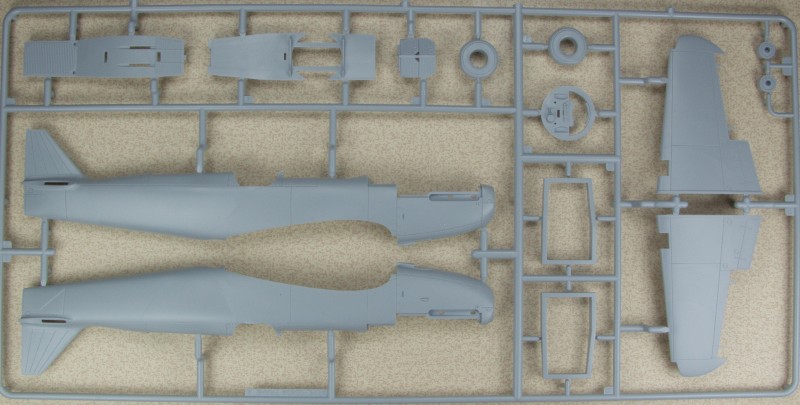
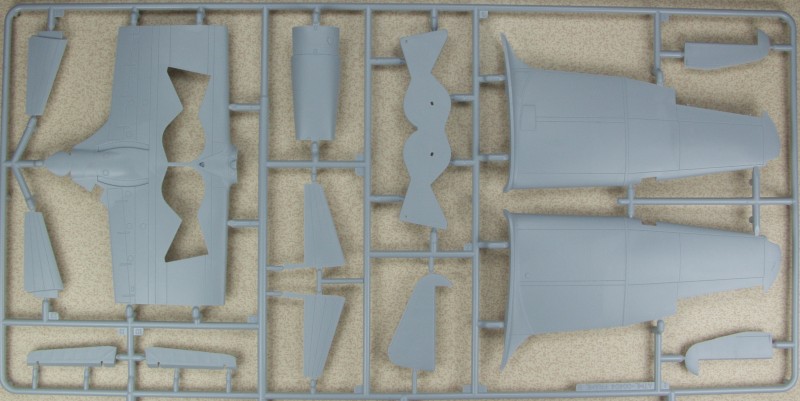
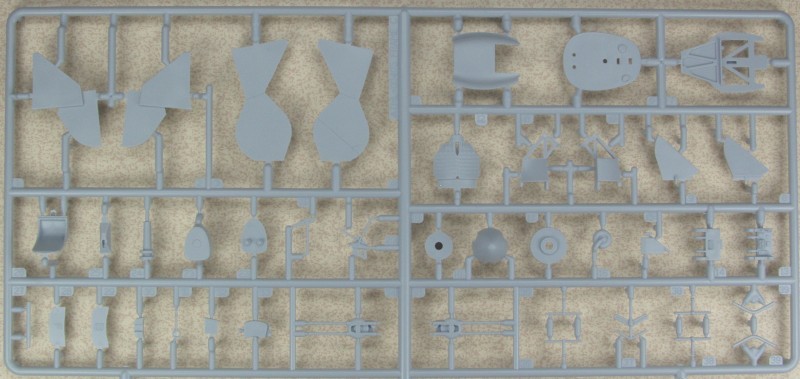
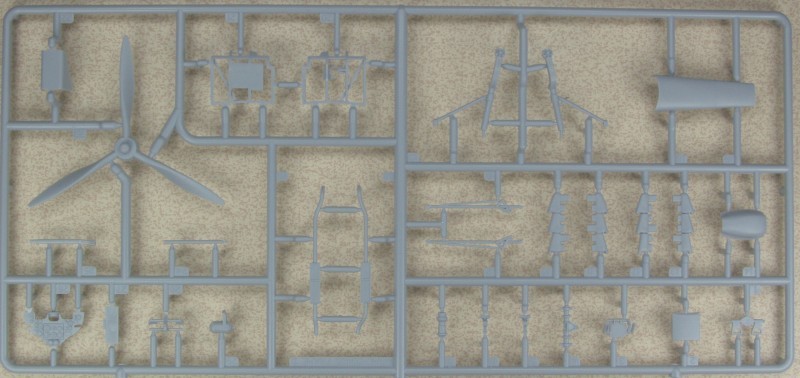
The clear parts are reasonably thin and clear with minimal distortion.
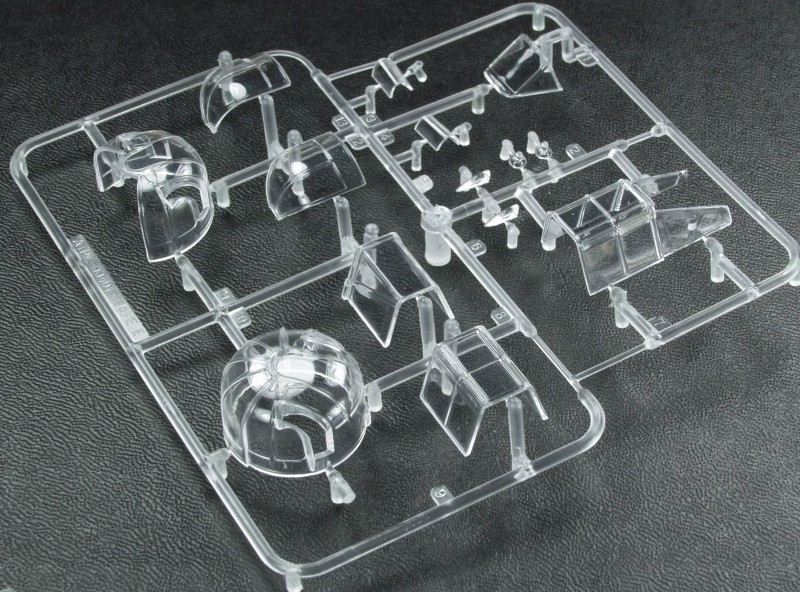
The decals appear thin, appear to be sufficiently opaque, have a semi gloss finish and are in register. They also have minimal excess film except on the larger letters. I have not tried any of these from the newer kits so I can't comment on how well they work. Markings are supplied for two aircraft, one from 264 Squadron, July 1940 and the other from No. II Army Cooperation Squadron, September 1940.
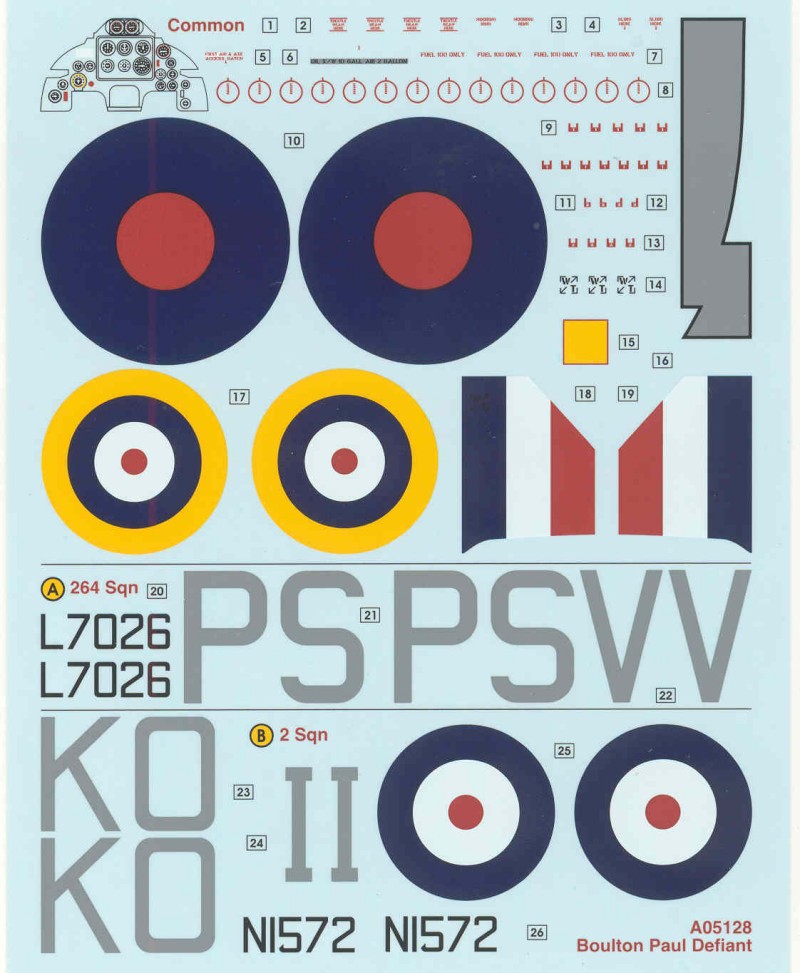
The instructions are a large 16 page booklet stapled at the spine. Page one has multilingual history and specifications, page two has some general assembly instructions and an icon chart. Pages three through thirteen are the assemble diagrams in 71 steps. The diagrams are cad like in half tone the part being added shown in red which makes for a very clear and concise way of illustrating what needs to be done. Pages 14 and 15 have full color profiles of the aircraft supplied on the decals with colors called out by name and Humbrol numbers. The last page has line drawing showing the placement of the common stencil decals. These new style instruction sheets are most impressive.
After Market Goodies
Eduard has released a mask set and several photo etch sets when I have the PE set I will add a photo here.
Conclusions
I'm most impressed with these newer Airfix kits, much better than the Airfix of old. The kit looks very nice in the in the box and should go together much easier than the older Classic Airframes kit which is reviewed in the Night Fighter section. I don't see any issues that would keep this from being doable by modelers of any skill level.
Links to kit build or reviews
A review / build can be found here, and another in box review here.
References
A Famous Fighters of the Second World War by William Green
Boulton Paul Defiant by Mark Ansell
Back to the Misc 1/48 British page
Updated 2/19/17